Find out about The Open University's Science courses and qualifications
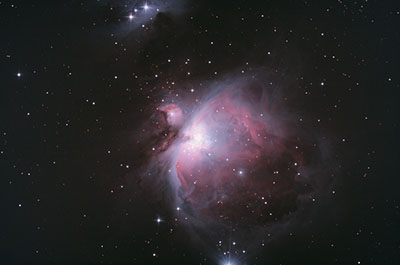 Orion's nebula
On a clear evening, look up at the night sky. With luck, from a really dark site, you might see a few thousand stars. With dark-adapted vision you should begin to notice that some stars display distinct colours – some will appear slightly redder and others slightly bluer, for instance. With sophisticated detectors attached to telescopes, this colour can be measured more clearly. In fact, the colour of stars is a fundamental clue to their nature, and how they evolve.
Orion's nebula
On a clear evening, look up at the night sky. With luck, from a really dark site, you might see a few thousand stars. With dark-adapted vision you should begin to notice that some stars display distinct colours – some will appear slightly redder and others slightly bluer, for instance. With sophisticated detectors attached to telescopes, this colour can be measured more clearly. In fact, the colour of stars is a fundamental clue to their nature, and how they evolve.
Quite simply, the colour of a star is a measure of its surface temperature. Cooler stars emit more of their light at longer wavelengths and so appear redder; hotter stars emit more of their light at shorter wavelengths and so appear bluer. Beyond the visible are other parts of the spectrum that our eyes cannot see, but which can nonetheless be picked up by appropriate astronomical detectors. Cool, red stars also emit significant amounts of long wavelength infrared radiation, and hot, blue stars also emit a lot of short wavelength ultraviolet radiation.
We’re familiar with the idea that our nearest star, the Sun, appears yellowish. This is a consequence of its surface temperature of around 5500 degrees. It’s a pretty average star, with a fairly average mass, size, luminosity and temperature. The Sun, like the vast majority of stars we can see, is in the mature part of its lifecycle – a phase astronomers refer to as the “main sequence” after the location that stars lie in on a graph of their luminosity versus temperature, known as a Hertzsprung-Russell diagram after the two astronomers who devised it a century ago.
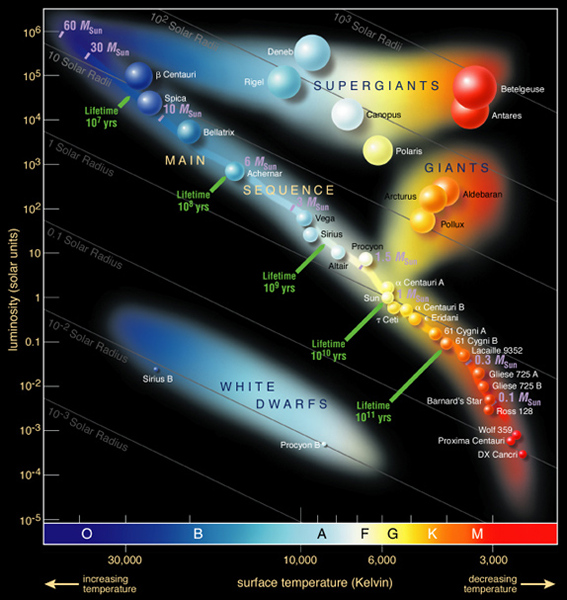 Hertzsprung-Russel Diagram identifying many well known stars in the Milky Way galaxy.
Hertzsprung-Russel Diagram identifying many well known stars in the Milky Way galaxy.
The Sun, being fairly average, sits near the middle of the main sequence. More massive, larger stars, are more luminous, and also hotter (and therefore bluer). They sit near the top of the main sequence and are known as blue giants. Less massive, smaller stars, are less luminous, and also cooler (and therefore redder). They sit near the bottom of the main sequence and are known as red dwarfs.
But stars do not stay at the same location on the main sequence for ever. In several billion years’ time, the Sun will begin to run out of nuclear fuel. The hydrogen in its core will all have been converted to helium through the nuclear reactions that power its main sequence lifetime. At this point the Sun will begin to swell up enormously, and its outer layers will cool. It will move off to the upper right of the Hertzsprung-Russell diagram, to a location occupied by luminous, cool stars – the red giants. Eventually, the Sun will settle down to a new phase of its life, undergoing a new set of nuclear reactions in its core, converting helium into carbon and oxygen.
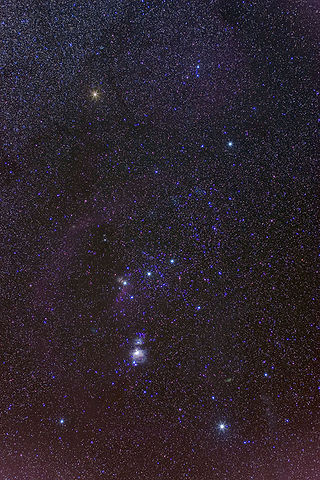 The constellation Orion
A good example of stars at different stages of their lives may be seen in the constellation of Orion, the hunter. Comprising seven bright stars, Orion is a familiar shape in the night sky – two stars mark his shoulders, and two stars mark his knees, with a belt of three stars across his middle. The star at the top right is Bellatrix, a blue giant star. It’s about 250 light years away and over 6,000 times more luminous than the Sun. Its mass is over 8 times, and its diameter around 6 times, those of the Sun, whilst its surface temperature is around 22,000 degrees. On the opposite shoulder of the constellation, the star at the top left is Betelgeuse, a red giant star. This star is further away but much more luminous than Bellatrix, and is also in a very different state. Betelgeuse is nearing the end of its life, and although it’s only about 8 times the mass of the Sun, it has swelled up to almost 1200 times the Sun’s size. Its surface temperature is a rather cool 3500 degrees.
The constellation Orion
A good example of stars at different stages of their lives may be seen in the constellation of Orion, the hunter. Comprising seven bright stars, Orion is a familiar shape in the night sky – two stars mark his shoulders, and two stars mark his knees, with a belt of three stars across his middle. The star at the top right is Bellatrix, a blue giant star. It’s about 250 light years away and over 6,000 times more luminous than the Sun. Its mass is over 8 times, and its diameter around 6 times, those of the Sun, whilst its surface temperature is around 22,000 degrees. On the opposite shoulder of the constellation, the star at the top left is Betelgeuse, a red giant star. This star is further away but much more luminous than Bellatrix, and is also in a very different state. Betelgeuse is nearing the end of its life, and although it’s only about 8 times the mass of the Sun, it has swelled up to almost 1200 times the Sun’s size. Its surface temperature is a rather cool 3500 degrees.
The Sun too will eventually swell into a cool red giant, like Betelgeuse. About 5 billion years from now, its core will run out of nuclear fuel. At this point, the outer layers of the Sun (comprising about half its mass) will drift off into space, carrying away some of the helium, carbon and oxygen atoms that have been created during its lifetime. This shell of material will be visible for a few thousand years as a so-called planetary nebula, and will seed the interstellar medium with newly created elements, ready to be incorporated into new generations of stars. Meanwhile the remnant core of the Sun will collapse into a white-hot, dense object, known as a white dwarf star. With a mass around half that which the Sun originally possessed, but a size comparable to the Earth, the white dwarf will initially have a surface temperature of around 100,000 degrees. Over the next billion years or so, it will fade in brightness and gradually cool down, moving through the colours until it eventually becomes cold and dead – a black dwarf.
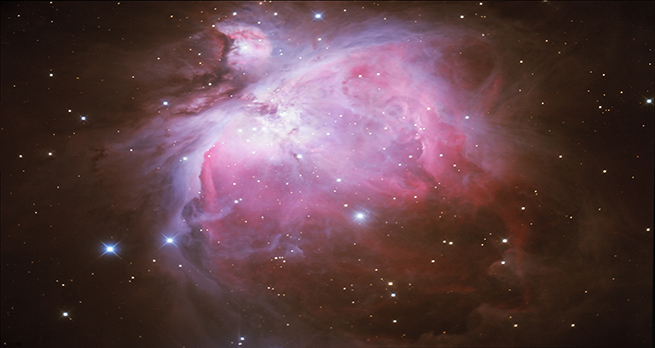
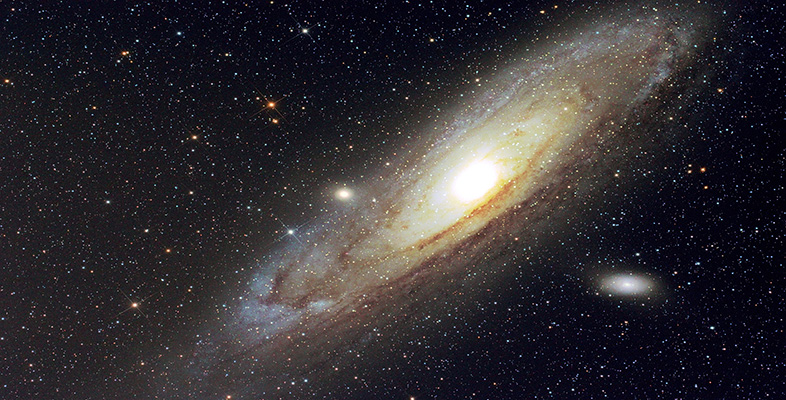
Rate and Review
Rate this article
Review this article
Log into OpenLearn to leave reviews and join in the conversation.
Article reviews